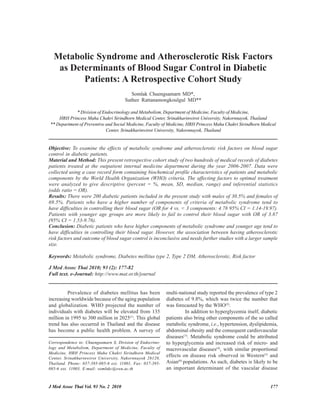This study examined the effects of metabolic syndrome and atherosclerotic risk factors on blood sugar control in 200 diabetic patients in Thailand. The results showed that patients with a higher number of metabolic syndrome components, such as hypertension, obesity, high triglycerides, and low HDL, had greater difficulty controlling their blood sugar. Younger patients and those who did not regularly attend the diabetic clinic were also more likely to have uncontrolled blood sugar. While atherosclerotic risk factors like smoking and family history were associated with worse control, the relationship was inconclusive due to the study's small sample size. In conclusion, metabolic syndrome components and younger age were linked to challenges with blood sugar management in diabetic patients.





